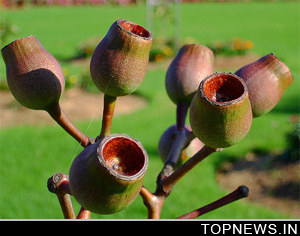Plants use ‘genetic memory’ to recognize when it is time to start flowering
 Washington, April 29 : Australian plant scientists have revealed that plants use a genetic memory to recognize when it is spring and can even count the number of cold days.
Washington, April 29 : Australian plant scientists have revealed that plants use a genetic memory to recognize when it is spring and can even count the number of cold days.
According to a report by ABC News, in a paper published in the Proceedings of the National Academy of Science, researchers show how winter cereal crops recognize when it is time to start flowering.
Co-author Dr Jim Peacock of CSIRO Plant Industry in Canberra said the findings could, in the future, help scientists genetically adapt wheat to remain productive under changing environments.
Peacock said that winter cereal crops need exposure to an extended period of cold weather to begin flowering, a process known as vernalisation.
He said that the study builds on an earlier CSIRO discovery that a gene known as VRN1, which is the master switch that controls flowering in cereals such as wheat and barley.
In the latest paper, Peacock and colleagues show how the VRN1 gene is activated in winter cereals, and reveal a "molecular memory" that is passed on from cell to cell in the plant's development.
"The remarkable thing is it is not a change to the genetic code," said Peacock, but rather a major shift in gene pathways controlled by chemical changes to the chromatin of the gene.
Chromatin consist of DNA and balls of protein known as histones.
According to Peacock, with exposure to the cold, certain chemical conditions modify the histones and change the way chromatin is packaged, causing it to become active.
He said that the plants retain a "molecular memory" of the prolonged cold of winter, which is reset in each new generation to ensure it is able to respond to vernalisation.
"Each generation of winter wheat has to go through the cold period before it can flower," he said. "The plant has this strategy to ensure it flowers and develops in the best weather conditions," he added.
The team, led by CSIRO plant scientist Dr Sandra Oliver, also found the plant responds to longer days.
In laboratory experiments, the researchers also found if the wheat was exposed to a very short cold snap, the flowering response was reduced.
Although gene activity can be detected within several days of cold weather, up to six to eight weeks of cold temperatures was needed for a strong flowering response, according to Peacock.
But, he added that cropping industries will benefit from the work, as climate change alters conditions in traditional growing areas.
"You can either have potential changes in grain-growing areas, or teach the plant to accept the changes in the climate," he said. (ANI)